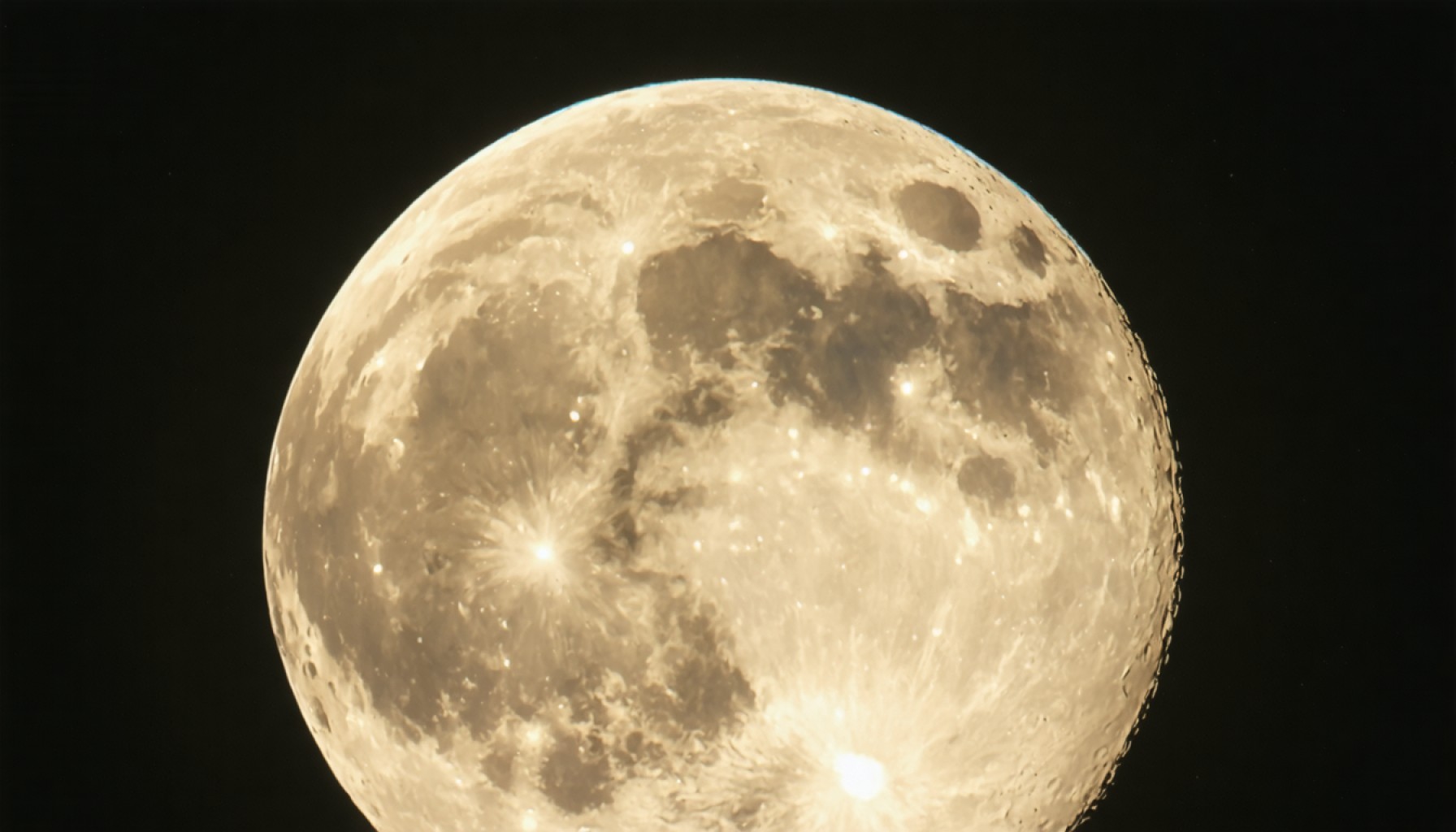- This weekend, a rare astronomical event known as a micromoon will occur, where the moon appears smaller due to its distance from Earth.
- The micromoon takes place when the moon is at its apogee, approximately 252,088 miles away, reducing its visible size and brightness.
- This event is a subtle contrast to the more well-known supermoon, offering a unique celestial display for those observing the night sky.
- Viewers are encouraged to find a clear, unobstructed spot free from light pollution to fully appreciate the micromoon’s gentle glow on Saturday at 7:23 p.m., especially in locales like Chicago.
- The micromoon will next appear in May and then again in 2026.
- Observing such lunar events deepens our understanding and appreciation of the universe’s intricate dynamics.
When gazing toward the night sky this weekend, expect to marvel at a moon that’s mysteriously smaller—a gentle astronomical enigma known as the micromoon. As our celestial neighbor, the moon, makes its distant journey from Earth, its apparent size dwindles, casting an ethereal glow that’s subtly less brilliant than usual. This weekend’s micromoon unfolds one of the year’s rare chances to witness this delightful quirk of lunar motion, following only two similar occurrences so far this year.
In the incessant dance between Earth and its lunar partner, the micromoon sneaks in as the softer counterpoint to the more celebrated supermoon, where proximity swells the moon’s luminosity and size. A micromoon happens when our satellite wanders to its apogee—the furthest checkpoint in its elliptical voyage, approximately 252,088 miles away. This positioning shrinks its visible disk slightly, a celestial whisper almost too faint for the hurried eye to catch, demanding a patient observer to appreciate the nuanced spectacle.
Lunar aficionados and casual stargazers alike are encouraged to peer skyward on Saturday night. The shadowy autumn altitudes of Chicago, for instance, will play host to this distant dance at 7:23 p.m. Seek an unhindered vantage, unchallenged by city lights and obstructions, to capture the micromoon’s fleeting presence, a testament to the dynamic choreography of the cosmos.
Understanding and embracing these ephemeral displays enrich our appreciation of the universe’s grand design. Though such moments may slip by unnoticed in the blink of an eye, they remind us that celestial phenomena unfold with a quiet elegance, offering glimpses into the orchestrated grace of the solar system.
Mark your calendars, for those who miss this delicate spectacle, the micromoon makes its subtle return next May before taking a three-part encore in 2026. Until then, the moon continues its timeless waltz, framing our lives with its constant yet ever-changing presence—an astronomical testament to the beauty of perspective.
Don’t Miss Out: Uncover the Mysteries of This Weekend’s Micromoon
Exploring the Micromoon: More Than Just a Smaller Glow
As you anticipate this weekend’s celestial event, let’s dive deeper into the phenomenon of the micromoon and what makes it an intriguing spectacle for both seasoned astronomers and curious night-sky watchers.
What Is a Micromoon, and How Does It Occur?
A micromoon happens when the moon reaches its apogee, the farthest point from Earth in its slightly elliptical orbit. This can make the moon appear up to 14% smaller and 30% dimmer than a supermoon, its more luminous counterpart. The moon’s apogee is approximately 252,088 miles away from Earth.
Visual Effects: How Different Is a Micromoon from a Regular Full Moon?
While the size difference may not be immediately noticeable to the casual observer, those with a keen eye or the aid of a telescope will appreciate the subtle visual nuances of a micromoon. It requires a focused eye to spot these differences amidst the vastness of the night sky.
How-To: Best Practices for Viewing the Micromoon
1. Find a Dark Location: Ensure minimal light pollution by heading to rural areas or parks. Cities with extensive artificial light can obscure the moon’s smaller size and softer glow.
2. Check the Weather: Clear skies are a must. Cloud cover can drastically reduce visibility, so plan your stargazing accordingly.
3. Gear Up: While the micromoon is visible to the naked eye, using binoculars or a telescope can enhance the experience, allowing you to observe the lunar details more closely.
4. Time It Right: Note the exact time of moonrise in your area. For instance, in Chicago, you’ll want to start at approximately 7:23 p.m.
Importance of Lunar Phases: Real-World Use Cases
Understanding lunar phases like the micromoon can be crucial for various real-world applications, including:
– Agriculture: Farmers use lunar cycles to plan planting and harvesting.
– Tide Predictions: Knowing when a micro or supermoon occurs can help predict tide levels, which is vital for coastal communities.
Trends: Future Predictions and Lunar Events
After this weekend’s event, the next micromoon won’t be until May 2024, with three more expected in 2026. As more people become interested in astronomy, awareness and appreciation of these smaller lunar events are growing.
Controversy and Limitations
Some critics argue that the differences in moon size and brightness are too subtle to be popularly marketed. However, the fascination with such phenomena lies in their scientific implications and the wonder they inspire.
Conclusion: Tips for Enjoyment
– Engage with a local astronomy club or online community to share experiences and tips.
– Keep a journal of celestial events to track changes over time and develop your understanding.
For more insights on astronomy and upcoming lunar events, visit Sky and Telescope and Space.com.
So, this weekend, set aside some time to gaze upwards. Whether you’re a seasoned stargazer or new to exploring the night sky, the micromoon is a gentle reminder of the universe’s ever-changing spectacles. Enjoy the peacefulness and beauty of this celestial event, and let it spark your curiosity about the wonders above.
